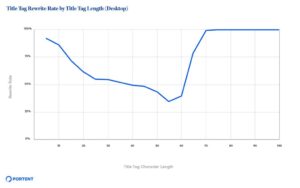Building and optimizing your tech stack with the best B2B marketing integrations improves the customer experience and streamlines operations.
Marketing teams are doing more with less, and they have fuller plates than ever. Companies are implementing AI tools in every element of business operations, and scrambling to make sure internal teams are taking advantage of AI to grow faster, work efficiently, and stay ahead of the competition.
And at the same time, budgets are lean, leading marketing teams to take a hard look at their tech spend and see where there are inefficiencies or redundancies. Recent HubSpot research found that the more point solutions, the higher cost of ownership.
“We’re seeing the tension between short-term growth and long-term brand investment. With the current economic pressures, many teams will invest heavily in CRO. Invest in brand marketing while optimizing your tech stack,” says Kipp Bodnar, CMO at HubSpot.
How Marketing Leaders are Shifting to Meet Customer Expectations
Growing economic challenges have led marketing teams to refocus their plans. Marketing leaders want to invest in predictable channels and win more business from contacts who already believe in their product.
And consumer expectations are higher than ever.
Retaining existing customers and leveraging upselling and cross-selling are keeping companies growing — and marketing leaders are focused on reducing inefficiencies to support these goals.
How the Crisis of Disconnection is Impacting Digital Marketing
Today, companies are using an average of 200+ apps — and many of these apps don’t speak to each other.
This yields a pile of effectively unusable data, located in various siloed departments of the company, telling no helpful stories and providing no useful solutions. All while using up valuable budget.
When customer-facing teams are siloed, it impacts the customer experience — which makes customer retention harder to achieve.
“What customers experience is a telltale sign of the function or dysfunction that exists internally. Realign around the customer journey,” says Ljubica Radoicic, Director of APAC Marketing and Customer Success at Autodesk shared in the recent State of Technology and the customer experience report.
She continues, “Find the disconnected points, look at NPS numbers, and talk to customers. Then, re-engineer the customer engagement model,”
All customer-facing teams need to be able to understand the customer journey, with access to shared data and communication. That means being able to follow individual customers and trends across all users.
If apps are disconnected from one another and the CRM, companies lose valuable customer information.
Marketing Hub’s robust ecosystem of B2B marketing integrations connects customer-facing tools to provide GTM organizations with a single source of truth while maintaining flexibility.
The Importance of a Marketing Tech Stack
With siloed data sitting in many different martech platforms, it takes a dedicated business insights professional (or a whole team of them) to make the data actionable. Their time is always in high demand, which slows down GTM campaigns.
But when apps and tools can effectively sync and talk to one another, flowing into one centralized platform like HubSpot Marketing Hub, any team member can easily dig in and create a data-backed strategy for every month, quarter, or year.
HubSpot’s App Marketplace has 1,250+ integrations that support memorable customer experiences and business growth.
As the martech app landscape continues to expand, there’s a B2B integration for virtually every marketing tactic you want to use to reach your audience.
And since so many platforms integrate with HubSpot, marketers can connect disparate systems and gather deep, actionable insights about the whole customer experience.
Here are 17 marketing integrations that you can use with HubSpot to improve the customer experience and grow with connected data.
1. Amplitude
Amplitude is a data tool for digital products that helps users dig in deep with analytics.
Marketing and customer success teams can track in-product events with Amplitude and add them to contact profiles in HubSpot, developing a better understanding of how customers use their products.
Another way to use Amplitude with your CRM is for smarter segmentation — use Amplitude cohort data to build HubSpot contact lists based on similar behavioral events, like users who enable push notifications during onboarding.
“The main benefit is getting our marketing email data from HubSpot into Amplitude for viewing, cohort analysis, debugging and user journey visualization,” said Austin Hay, Head of Marketing Technology at Ramp.
“At first, we used the integration to get alerts when pieces of the funnel were broken,” he continues. “Now, people use the data to visualize user journeys, create ad hoc analyses, debug campaigns and more.”
Hay continues, “[The integration] has made us more efficient. We needed the ability to give low-code operators tools to visualize our marketing email data. Amplitude has done this for us with the integration. It’s made us faster and more efficient in our work.”
2. ChatSpot
Marketers can leverage AI with the new ChatSpot app, which combines the power of ChatGPT and HubSpot CRM, helping make sense of your HubSpot data and turning insights into action items that will move the lever.
To make the most of ChatSpot, ask questions and provide instructions in natural language through the chat interface to help improve marketing and elevate the customer experience.
For example, rather than searching through your HubSpot account for data by hand, you can ask ChatSpot, “Give me a summary of customer support tickets from the past quarter that mention our product,” or “Create a report of companies added last quarter summarized by country.”
“[ChatSpot is a] massive game changer for frontline sales professionals! HubSpot was already the leader in CRM technology and utilized AI before ChatGPT. The fact that [ChatSpot is] so far along so quickly is a testament to [the HubSpot] team. Looking forward to leveraging this technology!” William McNeil, Founder of WeeklySuccess shared.
Sales and marketing teams can automate complex growth workflows with account engagement analysis, performance measurement, segmentation based on niche criteria, and multi-channel ABM automation.
3. Demandbase
Platforms like Demandbase help to align customer-facing teams and support data-driven knowledge-sharing to improve results and cut down on duplicate work.
“Demandbase works well for our business, it helps marketing, sales and business development align on target accounts. We use this integration for sales insights, merging sources for MAP, sales enablement and anonymous activity, and display-based advertising,” said Tess Baldwin, Sr. ABM Manager at Pattern.
4. Hightouch
Having the right data is one thing, and using that data to impact your business’s bottom line is another thing entirely.
Hightouch keeps customer data fresh and synced at all times, from all sources — so you can easily track each customer’s journey and provide a more personalized buying experience.
Hightouch supports customer success teams in understanding the customer journey and the data behind every conversion point, and HubSpot helps make it usable for growth.
Use Hightouch with HubSpot to:
- Set up proactive alerts based on customer behavior
- Boost ROAS and MQLs with smarter lead scoring
- Access churn and LTV intelligence to increase sales
James Wilson, CEO and Co-Founder at Veriglif wrote, “Amazing — saved so much dev time. Would recommend to anyone trying to sync data between PostgreSQL and HubSpot.”
5. Lucky Orange
Lucky Orange takes user journeys through a website and turns them into data-driven dashboards that shine a light on growth opportunities across your brand’s digital presence.
Use integrations like Lucky Orange with HubSpot to create heatmaps and track all web engagement events. Then, set up workflows and alerts in HubSpot that keep customers engaged and give your sales team opportunities to strike when the iron is hot.
“Lucky Orange is my favorite app for HubSpot — we use it for CRO and sales enablement. The heatmap features and form analytics give us great insights and the integration with HubSpot makes it possible to view how different segments use our site based on properties in HubSpot,” said Jeppe Nyrup, Head of Strategic Partnerships at Avidly.
Nyrup continues, “The recording feature is key for sales reps to monitor which contacts were interested in our pages.”
6. Microsoft Dynamics
Having your CRM set up correctly and accessible to all GTM teams is key to customer-centric business growth. The CRM should direct all business decisions and fuel marketing, sales, and support dashboards.
With HubSpot, you can bring your own CRM, like Microsoft Dynamics, connect it to your Marketing Hub, and reap the benefits of a unified source of truth between marketing and sales.
In order to see the most impact from your CRM, make sure your CRM data is synced at all times.
Maximize the power of the CRM for your sales team by helping them:
- Prioritize the right contacts
- Build relationships by reaching out at the right time
- Turn prospects into customers using data
“We want our BD team that are working in HubSpot to know if a lead has already been created from our inbound channel that the sales team is already working on or was working on at some point,” shared Høgni á Reynatrøð, Head of Digital Marketing, Queue-it.
“With the integration, we’re certain of not overlapping and collaborating even if we’re using two CRMs. The integration helps us avoid business development outreach at the same time as our sales team is working the account.”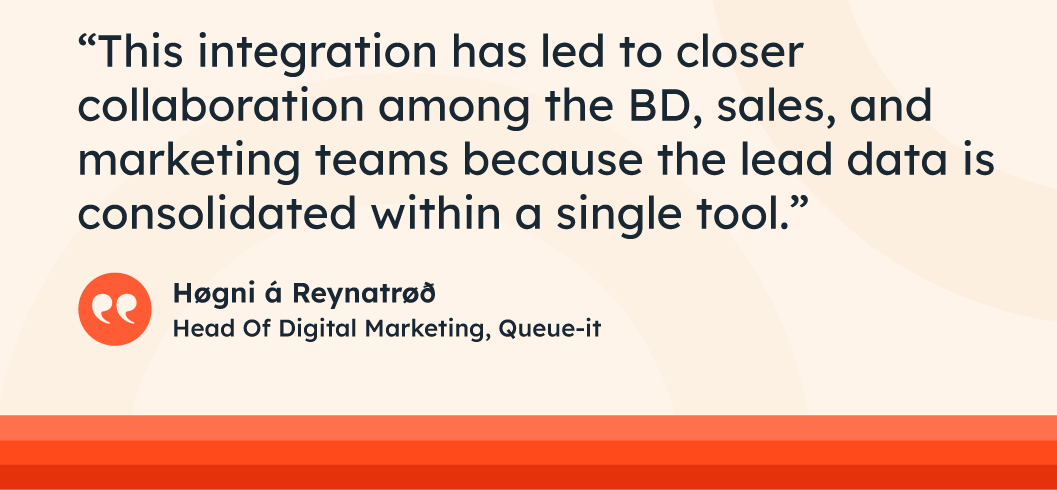
7. NetSuite
Clear prioritization helps sales teams close more deals. With NetSuite and HubSpot, sales teams can contact leads with a high intent to purchase. They have the data and tools to act as a consultant in the prospect’s journey.
Using even more customer activity data from marketing, sales can build a fuller picture and address customer pain points.
The NetSuite and HubSpot integration also cuts out manual data entry, allowing sales teams to spend time building relationships with prospects.
“We use this integration to sync MQL contact details from HubSpot to NetSuite and share the same lifecycle and lead status between the two apps. Overall it was a very smooth transition,” Dinithi Abeysiri, Digital Engagement Manager at Hot Spring Spas said.
8. ON24
ON24 is a webinar and virtual event platform that enables seamless digital experiences. The ON24 webinar integration supports smarter webinar hosting and promotional efforts by syncing ON24 data with HubSpot, and vice versa.
When event marketing teams integrate ON24 with HubSpot, they can host more dynamic webinars, send engaged leads directly into the sales pipeline, and convert more attendees into qualified leads.
Leverage the bidirectional sync between ON24 and HubSpot to:
- Share registration information between strategic partners
- Create a HubSpot landing page that automatically registers attendees with ON24
- Merge duplicate or existing contacts generated by webinar registrations
- Find new segments in HubSpot to target post-webinar based on actions during the event
“The primary benefits are ease of use and bi-directional sync. This allows us the flexibility to use the default ON24 registration page as needed, and push registrants into HubSpot, or to build and utilize a HubSpot landing page and registration page for a webinar while easily pushing those registrants into ON24,” said Aaron Burke, Executive Director of Marketing and Sales for Precision Medicine Group.
“Without this integration, we were only able to effectively push registrant leads from ON24 into HubSpot. The integration provides us with much more flexibility in how we are able to capture registrants to ON24 webinar events.”
9. OneSignal
Use OneSignal and HubSpot to create and facilitate personalized mobile and web push notifications within HubSpot workflows — and meet your customers wherever they are ready to buy.
Segmenting your audiences by engagement behavior, demographic information, or other custom criteria can lead to 21% higher click-through rates (CTRs).
And with HubSpot, you can now try AI tools like ChatSpot to find engaged segments to test.
Use the integration to:
- Send messages throughout the user journey and across channels
- Trigger in-app messages on mobile devices to educate and delight users
- Build custom notifications using HubSpot CRM data and add personalization tokens like first name, company name, or location
- Analyze push notifications in a contact’s activity timeline in HubSpot
“The integration allows you to use push communications through HubSpot. We run several revenue campaigns every month, so having the push app communication integrated within a flow makes the storytelling of that campaign synergistic,” shared Ligia Assef, Marketing Analyst at Suno.
“You can segment the customer base or leads according to your business, being even more direct and assertive in communication. As an extra benefit, automation frees up the team’s time to analyze results and make improvements to maximize the conversion rate.”
10. RollWorks
Integrating ABM tools like RollWorks with HubSpot make it possible to sync, segment, score, and prioritize the leads that need to be worked ASAP.
Plus, marketers can use ABM targeting to create dynamic digital ad campaigns, then track the performance in HubSpot.
ABM platforms help marketing teams uncover target audiences within your existing CRM or marketing suite.
And integrations like RollWorks and HubSpot can automatically surface the most qualified segments using machine learning and a proprietary prioritization algorithm.
“RollWorks [with HubSpot] has been highly successful for our business. We’ve been able to reach nearly half of our target accounts and progressively move them along in the buyer’s journey,” added Katie McCauley, Senior Marketing Manager at SnapFulfil.
“We use RollWorks to reach key buyers at target accounts that we may not be able to reach otherwise.” 
11. Salesforce
For mid-sized businesses up to enterprise organizations, joining sales and marketing data can be a beast.
But with smart integrations like the Salesforce and HubSpot integration, marketing and sales ops teams can automatically send HubSpot contact info into Salesforce, and Salesforce info back to HubSpot.
Use this integration to set up automated sales team alerts when a lead is ready to go — and help sales reps tailor their outreach using lead intelligence and optimization tools for a better success rate.
“The Salesforce + HubSpot integration lets us automate lead management, avoid mistakes, and get a whole view of marketing and sales activity,” shared Javier Peinado Ramirez, Digital Marketing Specialist at Wolters Kluwer España.
He continues, “We’ve improved efficiency in lead management and can access high-value information for sales and marketing.”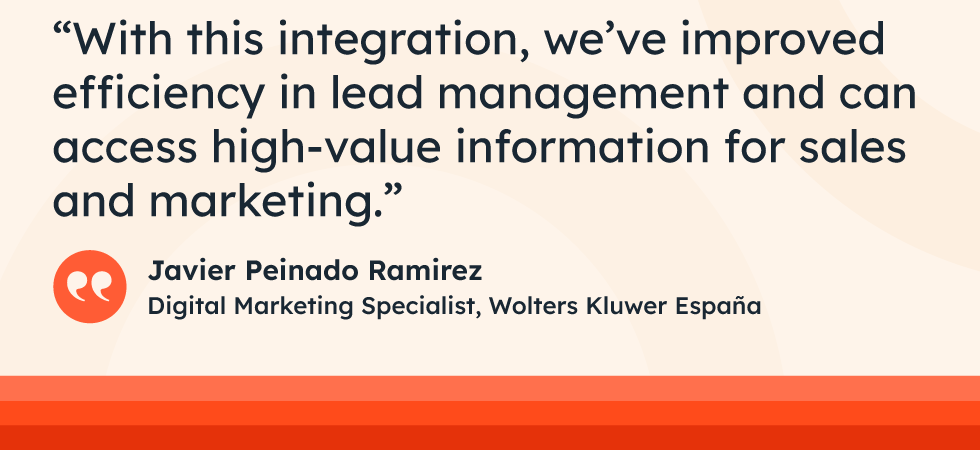
12. Segment
Customer Data Platforms (CDPs) like Segment collect events from web and mobile apps, then translate the data into actionable insights.
Using HubSpot and Segment together, marketing teams can define what data maps where, and how each source is tagged — with no code required.
Use Segment with HubSpot to:
- Centralize customer data from all sources and teams
- Automatically keep customer data up to date and sync changes across systems in real time
- Capture user activity and map behavioral events to contact profiles in HubSpot
- Add Segment events to HubSpot reports and workflows
- Save time and eliminate manual list uploading and management
“HubSpot’s Segment integration has allowed us to extend our ability to leverage customer website activity data into our HubSpot automation strategy,” Kaitlynn Sirotkin, Marketing Automation Manager at Enervee Corporation said.
“Using this data, we’ve been able to implement e-commerce strategies tailored to each specific buyer that otherwise would not have been possible without extensive custom development work.”
13. Sendoso
Delight prospects and customers by setting up HubSpot workflows that trigger Sendoso eGifts and physical gifts.
Marketing teams can use gifts and experiences to thank brand ambassadors and superusers, sales teams can follow-up demo calls with tailored thank-yous, and customer support can automate gift workflows whenever the occasion calls for an extra surprise and delight moment.
Use the Sendoso integration with HubSpot to:
- Automate direct mail gifting based on HubSpot criteria
- Measure ROI on direct mail or experience-based campaigns
- Set up email alerts for sales and marketing to keep teams aligned
- Trigger gifts based on activities in HubSpot, like attending a product demo
- Shorten the sales cycle with unique, personalized gifts
Jake Reni, SVP of Sales at AudioEye has found success with the integration.
“Easy to implement, launch, and drive adoption across my sales team. The product catalog has plenty of options for any type of campaign,” he said. “I’m loving that I can see when my team uses a Sendoso touch in their HubSpot contact activity feed. A must-have for anyone selling into enterprise!”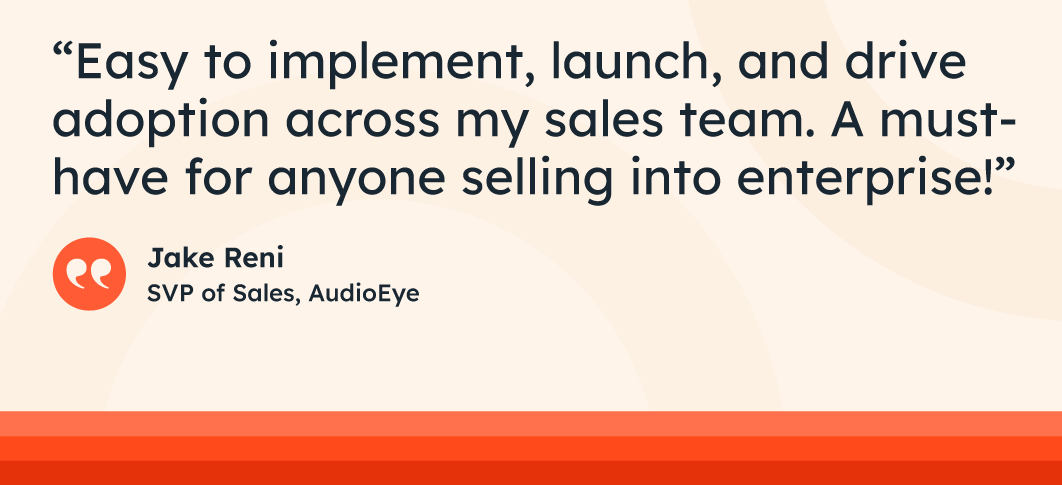
14. Supermetrics
For analysis of your business metrics, Supermetrics lets you automatically (and securely) move HubSpot data from all portals into spreadsheets, Google Data Studio, data warehouses, and any other databases.
Use this integration to discover insights across data sources, like which marketing campaigns have led to the most recurring revenue, or which customer support issues have led to the highest churn rates. Create data visualizations to track team performance and find places for improvement.
“[The HubSpot and Supermetrics integration] has helped us take reporting and data analysis to the next level. As the main Google Data Studio connector for client reporting for all digital marketing campaigns, we can integrate various data sources to correlate and get insights.
We also use it to get more metrics and visualizations on sales team performance. It has all the data sources any agency needs,” Maricarmen Vargas, Digital Marketing Customer Experience at Red Ventures said.
15. Tableau
Tableau is an intelligent data visualization tool that can turn data from HubSpot, along with other sources, into complex, but usable reports.
Use data platforms and business intelligence tools to create visualizations and dashboards that make trends and ideas more obvious, and tell stories with clear, actionable takeaways.
Use the Tableau integration for HubSpot to:
- Cross-reference marketing and sales data
- Optimize campaigns by segment
- Discover new audiences with a high opportunity to convert
- Benchmark funnel performance and identify problem areas
- Build dashboards to benchmark marketing performance

16. WhatsApp
Let your sales teams connect with customers with 1:1 messaging within HubSpot, delivered to prospects and customers on one of the most popular messaging apps globally: WhatsApp.
Keep track of each conversation within HubSpot, and set WhatsApp messages as workflow triggers.
Use WhatsApp with HubSpot to streamline communication:
- Send WhatsApp messages within HubSpot workflows
- Automate abandoned cart texts
- Receive notifications for new messages via HubSpot
- Add new leads from WhatsApp automatically
- Track sales conversations in a centralized location, not a sales rep’s personal device
- Allow customers and prospects to send documents or reach out for support via WhatsApp
- Pool incoming leads in a shared inbox and route conversations to sales reps
- Increase visibility into lead requests from SMS
“This integration allows us to record communications between our marketing and sales teams and prospects and clients, and make these conversations accessible to relevant members of our team. We’ve been able to improve our sales and client communications,” shared Kristeen Romero, RevOps Solutions Lead at Oxygen.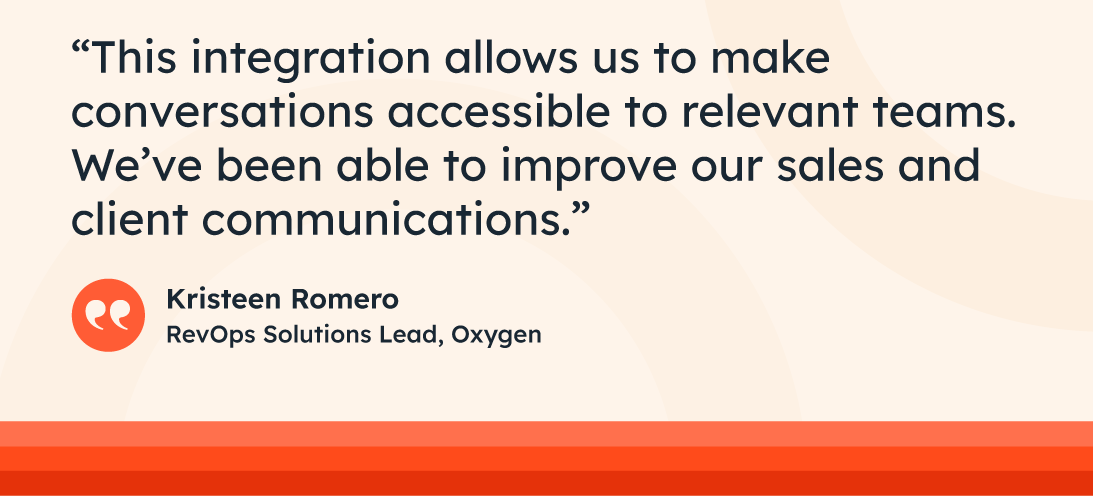
17. Zoom
Using the Zoom integration with HubSpot, you can automatically add video meeting links to marketing emails and sales invitations.
Plus, marketing teams can facilitate and promote Zoom webinar registration and follow-ups with HubSpot in a more streamlined workflow.
By automating appointment-booking, sales teams can book more calls and marketing teams can reduce friction in handing off warm leads.
Qaunain Meghjee, Senior Product Manager at The Economist uses the Zoom integration with HubSpot, and shared the following.
“[The integration] perfectly adds video meeting links into auto-generated calendar invites that are created via the live chatbot and the meeting bookings page. Now, meeting invite and reminder emails automatically have a Zoom link.”
Meghjee continues, “I like that the integration is cost-free, automatic, and works seamlessly with Outlook and Google Calendar integrations.”
Building a Strategic, Integrated Tech Stack: More Approachable Than Ever
With tools for everything from lead scoring to email marketing to social listening and more, it’s understandable that marketing teams want to eliminate inefficiencies and generate more revenue by bringing on new tools.
But if these tools can’t effectively talk to one another, it becomes a barrier to growth, not an advantage.
HubSpot’s App Marketplace has ready-to-use B2B integrations for every aspect of marketing growth. Marketing teams across industries can get insights from every tool and finally access that elusive single source of truth.
Clear data means clear insights — and the power to create a memorable customer experience that drives business.
![]()


![Read more about the article How to Post to Instagram From Your Computer [7 Easy Steps]](https://www.dimaservices.agency/wp-content/uploads/2021/05/55f44553-d63a-43bd-8957-63ac11fbcdb3-300x38.png)

